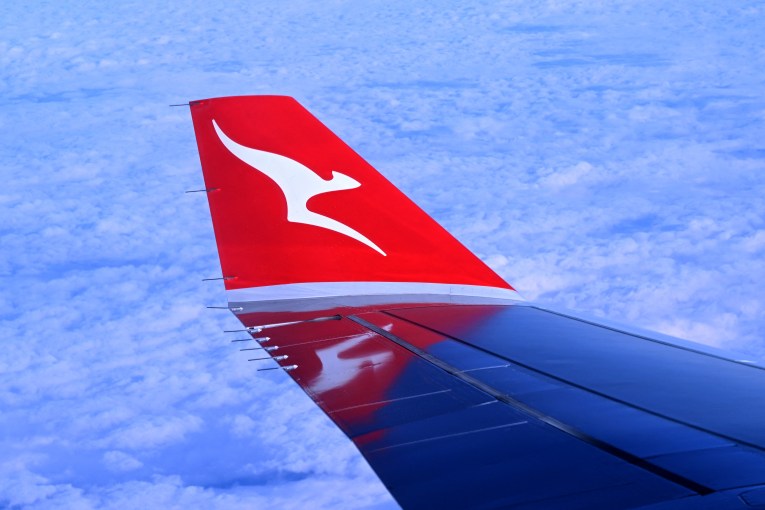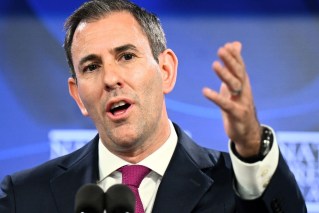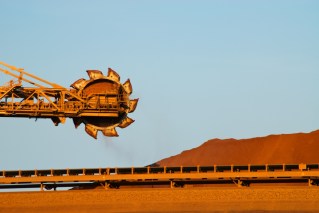How high will interest rates go? RBA flags more mortgage pain in 2023

Australians are being warned to expect more interest rate hikes after the Reserve Bank began 2023 with a fresh mortgage squeeze.
The RBA raised its target cash rate to a decade-high 3.35 per cent on Tuesday, in the fastest and biggest series of rate increases in Australian history since rates began rising in May.
A home owner with a $500,000, 25-year mortgage is now paying about $900 more each month than they were less than a year ago, data from RateCity shows. This equates to more than $11,000 each year.
RBA governor Philip Lowe on Tuesday suggested that even higher interest rates are needed to curb inflation.
A 6.9 per cent rise in underlying inflation in the December quarter was “higher than expected”, Dr Lowe said, blaming global and local factors.
“The board expects that further increases in interest rates will be needed over the months ahead to ensure that inflation returns to target, and that this period of high inflation is only temporary,” Dr Lowe said.
Inflation fears ‘dialled up’
Economists expected interest rates to rise on Tuesday, but Dr Lowe’s forthright signal that mortgage bills must rise further surprised many.
In fact, despite the rate hike being priced in, Dr Lowe’s statement triggered a marked fall in local markets, with the ASX All Ordinaries slipping into negative territory for the day in the minutes after the hike.

Interest rates will likely keep rising, the RBA has indicated.
Commonwealth Bank’s head of Australian economics Gareth Aird said the RBA had “dialled up” its concern about high inflation on Tuesday.
“The surprise was not in the [rate] decision, but rather the shift in tone and forward guidance in the governor’s statement,” Mr Aird said.
The RBA dropped a reference to the path for interest rates not being “pre-set” and instead flagged more rate hikes, he said.
“This change implies that the RBA board has essentially made up their mind and intend to raise the cash rate further over coming months, if the economic data prints in line with their updated forecasts.”
CBA has lifted its forecast for the peak in interest rates, expecting hikes in March and April, which would bring the target to 3.85 per cent.
ANZ Bank economists also expect interest rates will peak at 3.85 per cent, but believe the increases will be in March and May, not April.
“We still see the risks to that peak as tilted to the high side given the momentum in inflationary pressure,” ANZ senior economist Felicity Emmett said.
BIS Oxford head of macro-economic forecasting Sean Langcake said Dr Lowe’s statement suggests another rate hike in March is “a lock now”.
“That was not a very dovish statement,” Mr Langcake said.
“It’s all very much laying the groundwork for further [interest rate] hikes.”
Mr Langcake said he thinks interest rates will peak at 3.6 per cent in March and then remain on hold in April.
EY chief economist Cherelle Murphy said the RBA remains “doggedly determined” to bring inflation back down to its 2 to 3 per cent target.
“The RBA noted its concerns about inflation remaining too high because of global factors but also ongoing strong domestic demand, especially as wages continue to pick up,” Dr Murphy said.
“The RBA is determined to avoid a prices-wages spiral which would make their job more difficult in the year ahead.”
Economy slowing as interest rates felt
The Reserve Bank is raising rates in a bid to slow consumer spending, which, all else being equal, should make it more costly for firms to raise prices.
But because it takes time for higher rates to hit family budgets, much of the impact of the record-breaking hikes have yet to be fully felt.
Despite that, there are already signs consumer spending is slowing, with December-quarter retail sales volumes falling, according to ABS figures.
And separate National Australia Bank survey data suggests that about 40 per cent of Australians are already reining in spending on non-essentials like entertainment, takeaway food and holiday plans.
How this data feeds into Reserve Bank decision making is still unclear, with Dr Lowe on Tuesday saying a spending slowdown is still uncertain.
“Some households have substantial savings buffers, but others are experiencing a painful squeeze on their budgets due to higher interest rates and the increase in the cost of living,” he said in a statement.
“Household balance sheets are also being affected by the decline in housing prices.”
But Mr Langcake thinks evidence of a consumer spending slowdown is already clear.
“There’s an acknowledgement in today’s statement that the full impact of rate hikes is yet to be felt,” Mr Langcake said.
“A more balanced reading of what’s going on with consumption shows things are already slowing.”
Long road to low inflation
The key uncertainty for the interest rates outlook is how quickly inflation falls back to the RBA’s 2 to 3 per cent target band.
The RBA and most economists think inflation peaked late last year and will fall in 2023, though the RBA forecasts a return to target in 2025.
That foreshadows a long and slow fall in the pace of price growth as the global factors that first pushed prices up so fast give way to more local inflation, which is increasingly being driven by higher wages growth.
Mr Langcake said even if rates peak in early 2023, they will likely be held at decade-highs until inflation falls back to the target band, meaning there’s unlikely to be any mortgage relief on the horizon any time soon.








